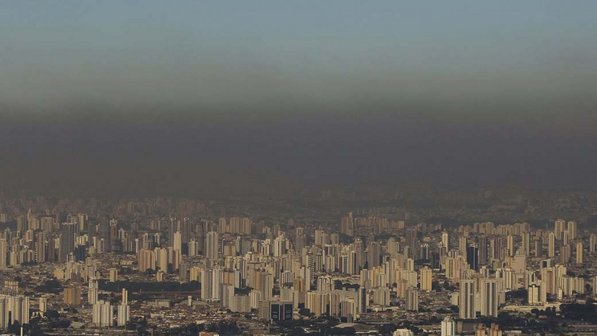Pollution
Pollution is the addition to the environment of products that threaten the health or survival of humans or other organisms.
Air pollution
The burning of fossil fuels in factories, plants and motor vehicles releases a series of toxic products into the air, in addition to carbon dioxide, the main gas causing global warming.
One of these products, formed in the incomplete combustion of fossil fuels and released in cigarette smoke, is carbon monoxide (CO), capable of combining with hemoglobin, which reduces the transport of oxygen by red blood cells and makes it difficult for the fabrics.
Thermal inversion
Under certain atmospheric conditions, a layer of warm air may lie on top of a layer of cold air close to the ground. This situation is known as a thermal inversion. This phenomenon can last for a few hours or weeks.
Water pollution
One of the most serious problems of water pollution is the release of non-biodegradable substances, such as heavy metals and persistent pollutants, such as most plastics and some pesticides, which tend to be concentrated along food chains and to intoxicate beings at the lowest levels. trophic.
Download our science app from the Play Store.
Eutrophication
When domestic sewage is thrown into the water or when detergents, fertilizers or manures reach it, the excess of minerals causes excessive proliferation of water. The death of algae causes an accumulation of organic substances in the water, which favors the multiplication of decomposing bacteria, increasing the consumption of oxygen for decomposition. Then, the lack of oxygen in the water begins, and the fish and other aerobic organisms die. With the lack of oxygen, the decomposition of organic matter, which used to be aerobic, becomes anaerobic, which leads to the production of toxic gases, such as hydrogen sulfide.
Destruction of soils
Accelerated erosion
A natural and slow phenomenon, erosion occurs when the impact of rain breaks up the particles that form the surface and most fertile layer of the soil, facilitating their transport by rainwater and winds from higher regions to rivers, lakes, oceans and valleys. This process is balanced by the natural degradation of rocks, but when humans interfere, with deforestation and forest burning, for example, this compensation ceases to exist and the process is accelerated. Erosion also causes the silting of rivers, which facilitates their overflow and flooding.
Trash
They are solid waste from urban areas, popularly called garbage.
- dump: garbage is thrown into a vacant lot, forming a dump; it is a bad solution, as it favors the transmission of diseases and pollution by metals and other toxic products.
- landfill: a tractor spreads and crushes garbage in trenches, making it compact. This layer of rubbish is covered with earth, which is also compacted, and a new layer of rubbish can be deposited on top of it. If well constructed, the landfill does not pollute the environment.
- incineration: waste is burned in special appliances and plants; has the advantage of greatly reducing the volume of waste, in addition to destroying the organisms that cause diseases, present mainly in hospital and industrial waste, and reducing the areas for landfill.
- composting: process of transforming organic waste from garbage into organic matter, called compost, which can be used as fertilizer. It requires a smaller area than landfills, but there needs to be demand for the compost in order to reduce the costs of the process.
- recycling: reuse by the industry of totally or partially recoverable materials, such as plastics, paper, metals and glass, separating these materials from organic waste, which can be sent to composting plants.
Radioactive pollution
Nuclear tests and accidents at power plants are an extra source of radiation released into the environment. There is also the problem of storing radioactive waste produced in nuclear power plants. Radiation causes the formation in the body of a large amount of free radicals, unstable molecules that can combine with different parts of the cell and impair its functions: they can rupture the cell, break its chromosomes or alter the chemical material that forms genes, and the mutations. Some mutations can cause cancer or, if they occur in the reproductive cells, cause changes that will be passed on to subsequent generations.
Noise pollution
The effects of noise pollution depend on the intensity of the sound, time and exposure and the person's sensitivity, and can range from tinnitus and transient hearing loss to its irreversible writing. But noise pollution does not only affect this sense. It is also stressful, as it stimulates the production of adrenaline and cholesterol and favors heart problems. The more a person is bothered by a noise, the greater its negative effects.
References:
AMBIS, José Mariano; MARTHO, Gilberto Rodrigues. Modern Biology. 1st Edition. São Paulo: Moderna, 2016.






Comentários
Postar um comentário